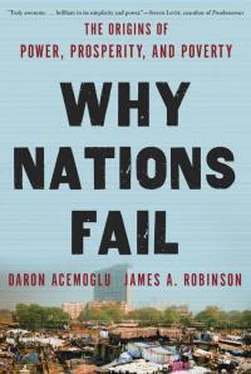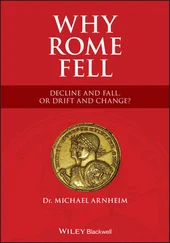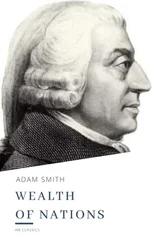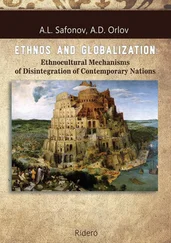Because of the party’s control over economic institutions, the extent of creative destruction is heavily curtailed, and it will remain so until there is radical reform in political institutions. Just as in the Soviet Union, the Chinese experience of growth under extractive political institutions is greatly facilitated because there is a lot of catching up to do. Income per capita in China is still a fraction of that in the United States and Western Europe. Of course, Chinese growth is considerably more diversified than Soviet growth; it doesn’t rely on only armaments or heavy industry, and Chinese entrepreneurs are showing a lot of ingenuity. All the same, this growth will run out of steam unless extractive political institutions make way for inclusive institutions. As long as political institutions remain extractive, growth will be inherently limited, as it has been in all other similar cases.
The Chinese experience does raise several interesting questions about the future of Chinese growth and, more important, the desirability and viability of authoritarian growth. Such growth has become a popular alternative to the “Washington consensus,” which emphasizes the importance of market and trade liberalization and certain forms of institutional reform for kick-starting economic growth in many less developed parts of the world. While part of the appeal of authoritarian growth comes as a reaction to the Washington consensus, perhaps its greater charm—certainly to the rulers presiding over extractive institutions—is that it gives them free rein in maintaining and even strengthening their hold on power and legitimizes their extraction.
As our theory highlights, particularly in societies that have undergone some degree of state centralization, this type of growth under extractive institutions is possible and may even be the most likely scenario for many nations, ranging from Cambodia and Vietnam to Burundi, Ethiopia, and Rwanda. But it also implies that like all examples of growth under extractive political institutions, it will not be sustained.
In the case of China, the growth process based on catch-up, import of foreign technology, and export of low-end manufacturing products is likely to continue for a while. Nevertheless, Chinese growth is also likely to come to an end, particularly once China reaches the standards of living level of a middle-income country. The most likely scenario may be for the Chinese Communist Party and the increasingly powerful Chinese economic elite to manage to maintain their very tight grip on power in the next several decades. In this case, history and our theory suggest that growth with creative destruction and true innovation will not arrive, and the spectacular growth rates in China will slowly evaporate. But this outcome is far from preordained; it can be avoided if China transitions to inclusive political institutions before its growth under extractive institutions reaches its limit. Nevertheless, as we will see next, there is little reason to expect that a transition in China toward more inclusive political institutions is likely or that it will take place automatically and painlessly.
Even some voices within the Chinese Communist Party are recognizing the dangers on the road ahead and are throwing around the idea that political reform—that is, a transition to more inclusive political institutions, to use our terminology—is necessary. The powerful premier Wen Jiabao has recently warned of the danger that economic growth will be hampered unless political reform gets under way. We think Wen’s analysis is prescient, even if some people doubt his sincerity. But many in the West do not agree with Wen’s pronouncements. To them, China reveals an alternative path to sustained economic growth, one under authoritarianism rather than inclusive economic and political institutions. But they are wrong. We have already seen the important salient roots of Chinese success: a radical change in economic institutions away from rigidly communist ones and toward institutions that provide incentives to increase productivity and to trade. Looked at from this perspective, there is nothing fundamentally different about China’s experience relative to that of countries that have managed to take steps away from extractive and toward inclusive economic institutions, even when this takes place under extractive political institutions, as in the Chinese case. China has thus achieved economic growth not thanks to its extractive political institutions, but despite them: its successful growth experience over the last three decades is due to a radical shift away from extractive economic institutions and toward significantly more inclusive economic institutions, which was made more difficult, not easier, by the presence of highly authoritarian, extractive political institutions.
A DIFFERENT TYPE of endorsement of authoritarian growth recognizes its unattractive nature but claims that authoritarianism is just a passing stage. This idea goes back to one of the classical theories of political sociology, the theory of modernization, formulated by Seymour Martin Lipset. Modernization theory maintains that all societies, as they grow, are headed toward a more modern, developed, and civilized existence, and in particular toward democracy. Many followers of modernization theory also claim that, like democracy, inclusive institutions will emerge as a by-product of the growth process. Moreover, even though democracy is not the same as inclusive political institutions, regular elections and relatively unencumbered political competition are likely to bring forth the development of inclusive political institutions. Different versions of modernization theory also claim that an educated workforce will naturally lead to democracy and better institutions. In a somewhat postmodern version of modernization theory, New York Times columnist Thomas Friedman went so far as to suggest that once a country got enough McDonald’s restaurants, democracy and institutions were bound to follow. All this paints an optimistic picture. Over the past sixty years, most countries, even many of those with extractive institutions, have experienced some growth, and most have witnessed notable increases in the educational attainment of their workforces. So, as their incomes and educational levels continue to rise, one way or another, all other good things, such as democracy, human rights, civil liberties, and secure property rights, should follow.
Modernization theory has a wide following both within and outside academia. Recent U.S. attitudes toward China, for example, have been shaped by this theory. George H. W. Bush summarized U.S. policy toward Chinese democracy as “Trade freely with China and time is on our side.” The idea was that as China traded freely with the West, it would grow, and that growth would bring democracy and better institutions in China, as modernization theory predicted. Yet the rapid increase in U.S.-China trade since the mid-1980s has done little for Chinese democracy, and the even closer integration that is likely to follow during the next decade will do equally little.
The attitudes of many about the future of Iraqi society and democracy in the aftermath of the U.S.-led invasion were similarly optimistic because of modernization theory. Despite its disastrous economic performance under Saddam Hussein’s regime, Iraq was not as poor in 2002 as many sub-Saharan African nations, and it had a comparatively well-educated population, so it was believed to be ripe ground for the development of democracy and civil liberties, and perhaps even what we would describe as pluralism. These hopes were quickly dashed as chaos and civil war descended upon Iraqi society.
Modernization theory is both incorrect and unhelpful for thinking about how to confront the major problems of extractive institutions in failing nations. The strongest piece of evidence in favor of modernization theory is that rich nations are the ones that have democratic regimes, respect civil and human rights, and enjoy functioning markets and generally inclusive economic institutions. Yet interpreting this association as supporting modernization theory ignores the major effect of inclusive economic and political institutions on economic growth. As we have argued throughout this book, it is the societies with inclusive institutions that have grown over the past three hundred years and have become relatively rich today. That this accounts for what we see around us is shown clearly if we look at the facts slightly differently: while nations that have built inclusive economic and political institutions over the last several centuries have achieved sustained economic growth, authoritarian regimes that have grown more rapidly over the past sixty or one hundred years, contrary to what Lipset’s modernization theory would claim, have not become more democratic. And this is in fact not surprising. Growth under extractive institutions is possible precisely because it doesn’t necessarily or automatically imply the demise of these very institutions. In fact, it is often generated because those in control of the extractive institutions view economic growth as not a threat but a support to their regime, as the Chinese Communist Party has done since the 1980s. It is also not surprising that growth generated by increases in the value of the natural resources of a nation, such as in Gabon, Russia, Saudi Arabia, and Venezuela, is unlikely to lead to a fundamental transformation of these authoritarian regimes toward inclusive institutions.
Читать дальше












